Mad Hedge Biotech and Healthcare Letter
January 16, 2025
Fiat Lux
Featured Trade:
(THE EYES HAVE IT)
(REGN), (SNY), (PFE), (BMY)
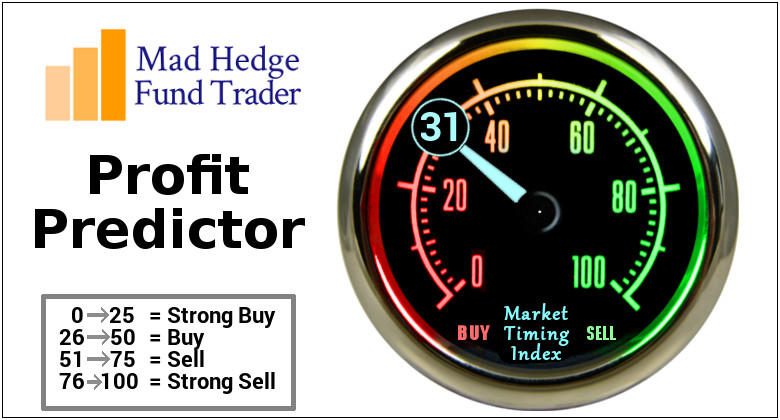
Mad Hedge Biotech and Healthcare Letter
January 16, 2025
Fiat Lux
Featured Trade:
(THE EYES HAVE IT)
(REGN), (SNY), (PFE), (BMY)

Last week, while waiting for my annual eye exam, I couldn't help but notice the parade of elderly patients shuffling in for their regular Eylea injections. My optometrist tells me these folks show up like clockwork every 4-8 weeks, rain or shine.
That's about to change, and therein lies a multibillion-dollar story.
You see, when Regeneron reported Q3 earnings on Halloween, boy, they sure had some treats for investors. Revenue hit $3.72 billion, up 11% YoY, with EPS coming in at a sweet $11.54.
But here's what really caught my attention: their cost of revenue was $1.762 billion, while R&D and SG&A expenses ran $1.271 billion and $714.4 million respectively.
Net income? A cool $1.34 billion. Not too shabby for a company whose main product is under siege from copycats.
Speaking of copycats, let's talk about Eylea. The original formula saw revenues drop 21% YoY to $1.145 billion – that's what happens when biosimilars crash your party.
This is where it gets interesting though: Eylea HD (think of it as Eylea's muscled-up big brother) jumped from a mere $43 million to $392 million YoY.
Sure, about $40 million of that came from wholesalers stocking up like it's Black Friday at Costco, but still – that's what I call a growth story.
I've been watching Regeneron since they were just a gleam in Wall Street's eye, and they've always had a knack for turning scientific breakthroughs into cold, hard cash.
Take Dupixent, their inflammation blockbuster co-developed with Sanofi (SNY). It just got FDA approval for COPD with an eosinophilic phenotype.
Why does this matter? Because we're talking about a $6 billion market opportunity here, folks.
About 36% of COPD patients have this particular flavor of the disease and trust me, there are more of them than you'd think still wheezing away on their old inhalers.
Want to know what else is cooking in their labs? They're working on antibodies that could make blood clots a thing of the past – think better than Eliquis, which pulls in $10 billion annually for Pfizer (PFE) and Bristol Myers Squibb (BMY). Their secret? Something called Factor XI, which could be a game-changer for the 1 in 5 patients at high risk for bleeding.
And because no self-respecting biotech can resist the siren call of the obesity market, they're also cooking up their own weight loss cocktail. Results won't drop until late 2025, but if they crack the code on keeping weight off AFTER stopping treatment, they'll have something Wegovy and Zepbound can't match.
The financials are rock solid, too: $2.012 billion in cash, $7.785 billion in marketable securities, and current assets of $19.334 billion versus current liabilities of just $3.661 billion.
They've generated $3.158 billion from operations in the first nine months of 2024 alone.
Yes, there's $1.984 billion in long-term debt, but with cash flow like that, it's about as worrying as a paper cut.
I've already started nibbling at Regeneron, and I'm looking to add more if it dips further. After all, this is a company that's proven it can grow revenues at upper single digits year over year while maintaining 25% free cash flow margins - the kind of numbers that make a value investor's heart skip a beat.
Sure, there are risks lurking around every corner – biosimilars nipping at Eylea's heels, Medicare negotiations that could squeeze margins, and clinical trials that might go sideways.
But with multiple growth catalysts and a pipeline that reads like a wish list for modern medicine, Regeneron's got more upside than my daughter's college tuition bills.
As my optometrist likes to say - in the land of the blind, the one-eyed man is king. But in the land of biotech, Regeneron's got a 20/20 vision for what's coming next.
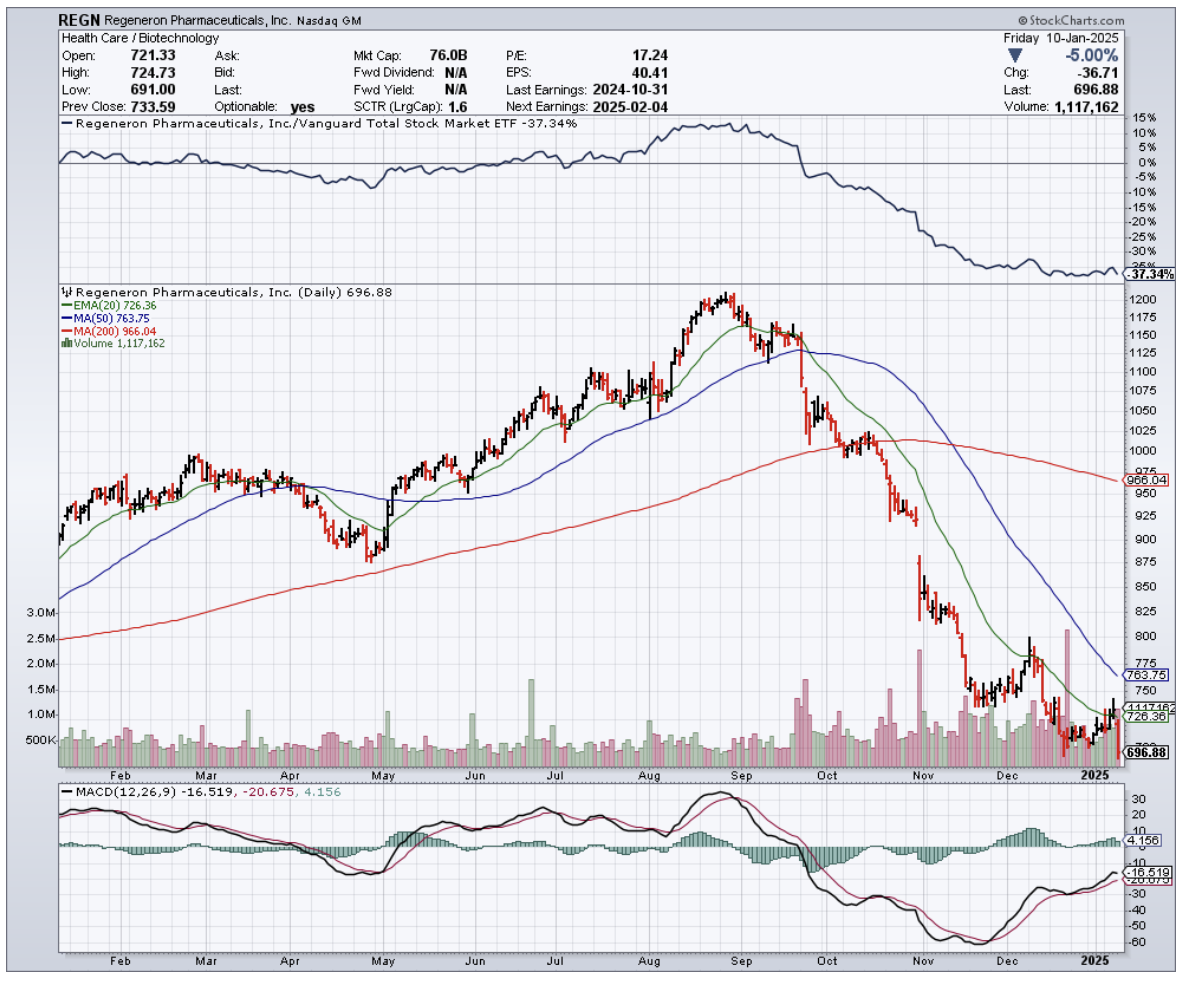
Mad Hedge Biotech and Healthcare Letter
December 17, 2024
Fiat Lux
Featured Trade:
(THE BIG BATCH THEORY)
(CTLT), (DHR), (RGEN), (AVTR), (NVO), (PFE), (LLY), (MRK)

If I had a nickel for every time someone said pharmaceutical manufacturing was boring, I could’ve started bidding against Novo Holdings for Catalent (CTLT) myself.
Sure, I’d still be $16.5 billion short, but you get the point—this deal is huge, and it’s about to make some smart money look even smarter.
Here’s the deal: Novo Holdings is shelling out $16.5 billion to snap up Catalent, a contract development and manufacturing organization (CDMO).
If that acronym sounds like alphabet soup, let me translate: CDMOs are where the real action happens.
These are the guys behind the curtain making sure your miracle drugs and life-saving treatments aren’t just ideas—they’re products hitting the market at scale.
The numbers don’t lie. The CDMO market sits at $146 billion right now.
Fast-forward to next year, and that balloons to $243.3 billion. By 2029, it’s cruising toward a cool $332 billion.
And if you think that’s impressive, just wait: the broader pharmaceutical outsourcing trend is nowhere near slowing down.
In 2014, Big Pharma still clung to in-house production for 66.3% of its output.
Today? That figure’s down to 51%, and dropping fast. Why? Because outsourcing lets the specialists handle the hard stuff—faster, cheaper, and more efficiently.
For investors, Catalent’s immediate upside is a no-brainer. The acquisition premium is pure gravy, but that’s not the whole story.
Rivals like Lonza Group (SWX: LONN) and Samsung Biologics are already feeling the heat.
The biologics CDMO market alone is expected to expand by $10.63 billion between 2024 and 2028, and you better believe those two are scrambling to stay ahead.
If you own shares, keep your seatbelt fastened. If you don’t, well… you might want to rethink that.
And here’s where it gets really interesting: Novo Holdings may be private, but its publicly traded golden child, Novo Nordisk (NVO), is set to ride this wave like a pro surfer.
They’re already a global powerhouse in biologics, and Catalent’s souped-up manufacturing capabilities are going to help them scale production with military-grade efficiency.
Lower costs, tighter operations, bigger margins—it’s like handing a Formula 1 car to an already championship-winning team.
So if you’re not watching Novo Nordisk stock, you’re doing it wrong.
Of course, it’s not just the big CDMO players who stand to win here. Companies like Danaher (DHR), Repligen (RGEN), and Avantor (AVTR) are quietly cashing in on this gold rush.
These firms supply the picks, shovels, and critical bioprocessing tools that CDMOs need to keep production humming.
As Catalent scales under Novo Holdings, demand for these essentials will go through the roof.
Zooming out, the pharma manufacturing landscape is evolving at a breakneck pace.
The CDMO market is expected to hit $530.3 billion by 2033, growing at a steady 7.7% CAGR.
That’s not speculative growth—it’s a structural shift, backed by demand for biologics, gene therapies, and personalized medicine.
In short, we’re entering an era where outsourcing is king, and companies with the infrastructure to capitalize on it are poised to dominate.
Don’t forget about the big dogs in Big Pharma, either.
Pfizer (PFE), Eli Lilly (LLY), and Merck (MRK) aren’t just spectators in this game. They’re snapping up CDMO capacity, investing in biologics, and doubling down on therapies with blockbuster potential.
The Catalent deal is just the latest chess move in a game where the stakes keep getting higher.
So what does this mean for you? If you’re holding Catalent, congratulations—your portfolio is about to get a nice bump.
But the real play here isn’t Catalent alone. It’s understanding that CDMOs, suppliers, and adjacent players are the unsung heroes of this industry transformation.
You want exposure to the companies enabling the next wave of medical innovation? This is where you look.
Novo Holdings just threw down the gauntlet, and the smart money is already moving. The pharmaceutical manufacturing sector isn’t boring—it’s booming.
So, while everyone’s chasing flashy biotech startups and blockbuster drugs, the real smart money is quietly following the companies that make those breakthroughs possible.
Catalent isn’t just a $16.5 billion deal—it’s proof that outsourcing is the new backbone of pharma’s future. Call it “The Big Batch Theory:” scale up, outsource smart, and watch the returns multiply.
Ignore this shift, and you’re leaving money on the table.
Now, if you’ll excuse me, I need to check my CDMO positions. Just like a perfectly run batch, they’re growing fast—and that’s exactly how I like it."
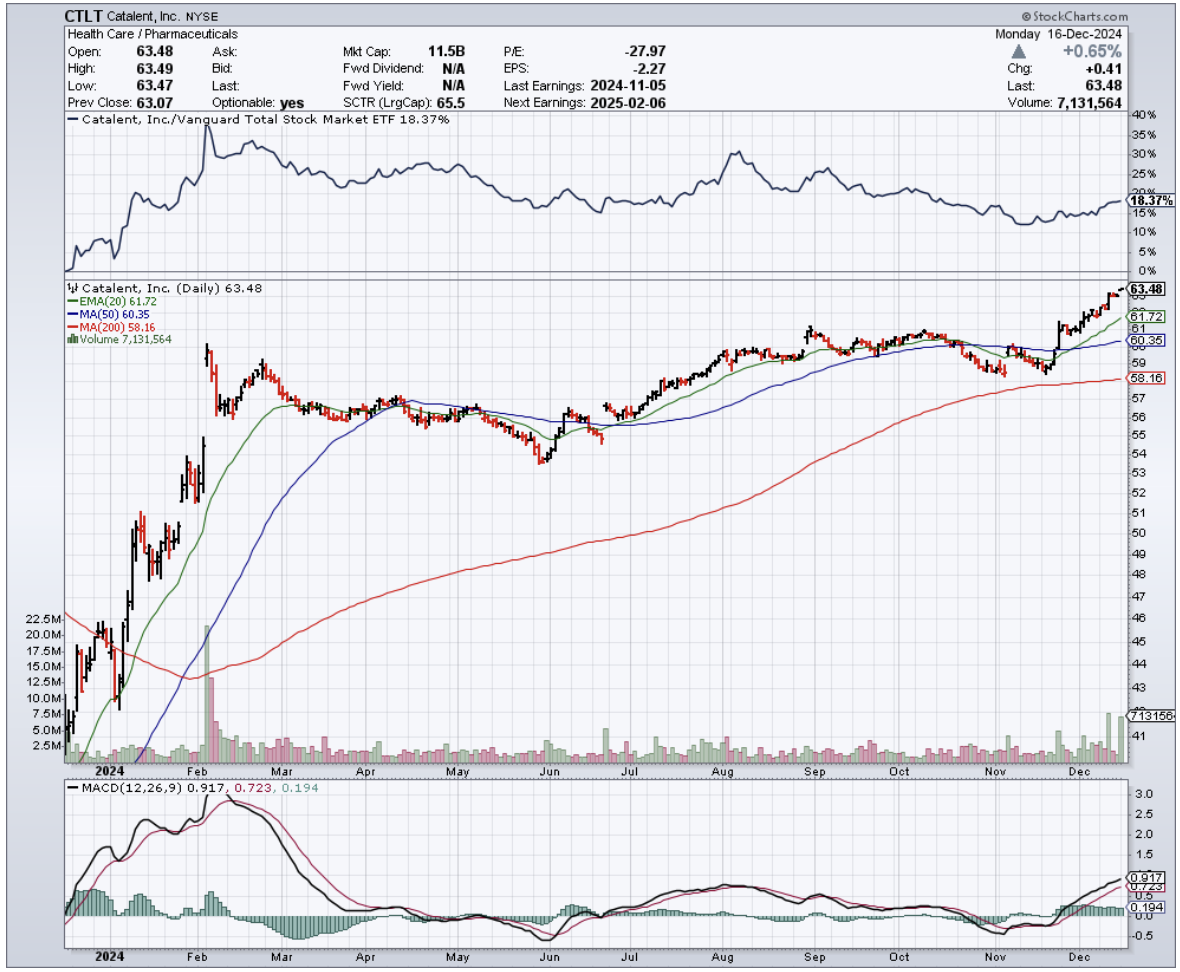
Mad Hedge Biotech and Healthcare Letter
December 12, 2024
Fiat Lux
Featured Trade:
(BREAKING THE MOLD)
(MRK), (PFE), (GILD), (AZN), (DSNKY), (JNJ)

Did you know that in the 1890s, scientists tried to cure cancer by injecting patients with... bread mold? (Spoiler alert: it didn't work.)
Fast forward to 2024, and Merck just announced something that makes moldy bread look like, well, moldy bread: their new cancer drug achieved a 100% complete response rate in its Phase 3 trial.
That's doctor-speak for "the cancer completely disappeared in every single patient." Not 99%. Not 99.9%. One hundred percent.
The drug in question is zilovertamab vedotin, and it belongs to a fascinating family of medications called antibody-drug conjugates, or ADCs.
These drugs are essentially molecular delivery trucks - the antibody part knows exactly where to go, while the drug part carries the cancer-fighting payload.
It's a bit like having a microscopic postal service that only delivers to cancer cells, except instead of Amazon packages, it's delivering something more lethal.
The story of how Merck got their hands on this drug is equally interesting.
In 2020, they wrote a check for $2.75 billion to acquire a company called VelosBio. To put that number in perspective, that's enough money to fund a small space program, or if you're feeling particularly eccentric, to buy 5.5 million laboratory mice (a purchase that would probably raise some eyebrows at the bank).
The global market for ADCs hit $7.72 billion in 2023, and some analysts predict it could reach $44 billion by 2029. I asked three different economists to explain these projections and got four different answers, but they all agreed on one thing: it's a lot of zeros.
And, as expected, the competition in this field is intense. Pfizer (PFE) bought Seagen for $43 billion. AstraZeneca (AZN) and Daiichi Sankyo (DSNKY) partnered up for Enhertu, while Gilead Sciences (GILD) nabbed Immunomedics and their wonderfully named drug Trodelvy.
Even Johnson & Johnson (JNJ), which most people associate with baby shampoo and that bottle of Band-Aids in their medicine cabinet, jumped into the fray by buying Ambrx Biopharma.
Then there's Mersana Therapeutics, partnered with Merck. They're smaller than the pharmaceutical giants, but in biotech, size isn't everything. (I once visited a lab where groundbreaking cancer research was happening in a space roughly the size of my kitchen.)
What makes Merck's achievement particularly remarkable is its rarity. In the world of cancer research, getting a 100% response rate is about as common as finding a unanimous decision on social media. It represents a fundamental shift in how we treat cancer, moving from traditional chemotherapy to these precisely targeted treatments.
For investors wanting a piece of this molecular magic, here's the thing: success in biotech isn't like picking a winning racehorse (though both can make your palms equally sweaty).
It's about finding companies that have mastered the three-ring circus of innovation, partnerships, and research pipelines. And yes, I've spent enough time in research facilities to know that "pipeline" is just a fancy word for "stuff we hope works but haven't broken yet."
Merck's perfect score suggests they've cracked one particular code, but companies like Seagen (now part of Pfizer), AstraZeneca, and Daiichi Sankyo are all pushing boundaries in their own ways.
Despite the competition, Merck's recent achievements still look the most promising. The company's breakthrough with zilovertamab vedotin suggests they're not just throwing darts at a laboratory wall - they're onto something big. So when their stock dips, smart money takes notice.
Similarly, Seagen, now under Pfizer's umbrella, looks particularly promising, especially given their established track record in the ADC space and Pfizer's deep pockets. Add them to your watchlist, too.
AstraZeneca and Pfizer, meanwhile, merit a steady "hold" position in your portfolio - like that reliable sourdough starter that keeps producing even if it's not particularly exciting at the moment.
Both companies have proven ADC programs and the resources to weather market volatility, even if they're not currently serving up the kind of headline-grabbing results that Merck just delivered.
Remember those 19th-century scientists with their bread mold? Turns out, they were onto something, even if their execution was a bit... moldy.
And while I wouldn't recommend their treatment methods today (please don't raid your fridge for experimental purposes), their spirit of innovation lives on in every precisely-targeted ADC molecule. After all these years, I guess you could say cancer treatment has finally risen above its moldy beginnings.
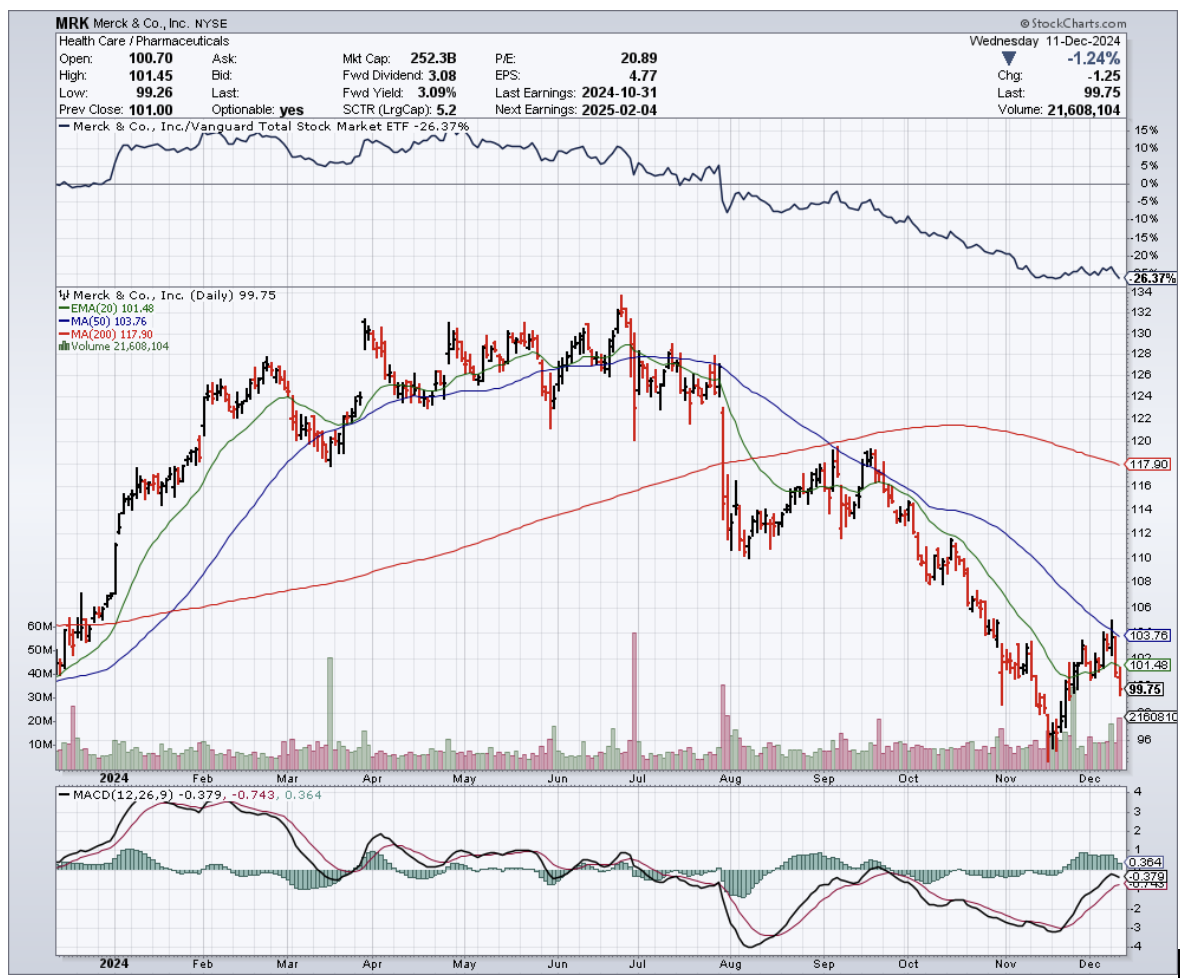
Mad Hedge Biotech and Healthcare Letter
November 26, 2024
Fiat Lux
Featured Trade:
(NO MORE EATING AT YOU)
(PFE), (LLY), (NVO), (AMGN), (RYTM), (ALT)
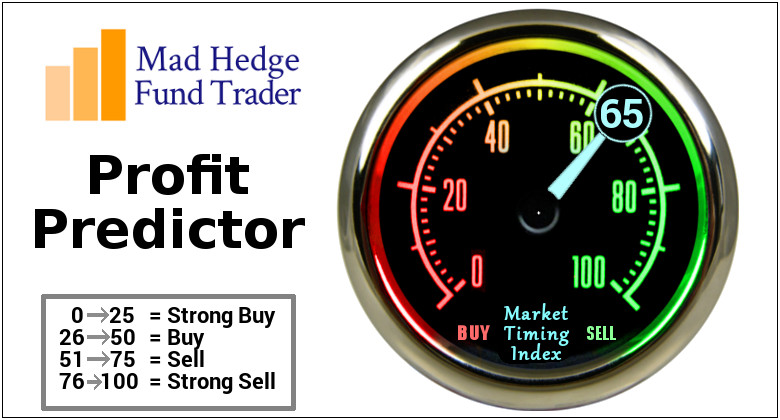
Who knew the devil could lurk in an Excel spreadsheet? More specifically, in a hidden tab that, until recently, was minding its own business like a shy teenager at a school dance.
That is, until some eagle-eyed analyst at Cantor Fitzgerald decided to right-click their way into a $12 billion nightmare for Amgen.
(If you're wondering how to find these hidden tabs yourself, just right-click on any visible tab in Excel. Though after this debacle, pharmaceutical companies might start password-protecting their spreadsheets like they're nuclear launch codes.)
The data in question concerns MariTide, Amgen's hopeful contestant in the "help-America-lose-weight" sweepstakes.
The hidden tabs revealed what the published paper in Nature Metabolism conspicuously didn't mention: bone density scans that would make an osteoporologist reach for their stress ball.
Patients receiving the 420-milligram dose saw their bone density drop by about 4% over 12 weeks - the kind of number that sends stock traders reaching for their sell buttons faster than you can say "osteoporosis."
Speaking of selling, this discovery sent Amgen's stock tumbling 7%, which in the biotech world is like watching $12 billion vanish faster than free cookies at a Weight Watchers meeting.
Amgen, doing what pharmaceutical companies do best when faced with uncomfortable data, assured everyone that their Phase 1 study doesn't suggest any bone safety concerns. (One imagines their PR team working overtime, possibly sustained by the same stress-eating habits their drug aims to curb.)
Now, let's talk about the increasingly crowded room of companies trying to help elephants become gazelles.
Novo Nordisk (NVO), the current crown prince of weight-loss drugs, is sitting pretty with Wegovy raking in 17.3 billion Danish kroner (about $2.5 billion) in just one quarter.
They're so confident they're throwing $11 billion at Catalent faster than you can say "production scale-up." That's enough kroner to buy every Danish pastry in Copenhagen, though that might defeat the purpose.
Not to be outdone, Eli Lilly's (LLY) Zepbound is showing off with weight loss results that would make Jenny Craig jealous - we're talking 21% body weight reduction.
Together with Novo Nordisk, they're expected to dominate 80% of the market, leaving other companies to fight over the crumbs like desperate dieters at a birthday party.
Still, the supporting cast is equally fascinating.
Pfizer's (PFE) danuglipron and Structure Therapeutics' (GPCR) GSBR-1290 are trying to turn these injectable drugs into pills, because apparently not everyone enjoys playing pin cushion.
Viking Therapeutics (VKTX) is getting creative with VK2735, a dual GLP-1 and glucagon receptor agonist, which is pharmaceutical speak for "two mechanisms of action are better than one."
Meanwhile, AstraZeneca's (AZN) AZD5004 is trying to join the party, though their early Phase I results are about as impressive as a rice cake at a dessert buffet.
Now, let’s take a look at the numbers. The global anti-obesity drugs market is expected to balloon from $6.15 billion in 2024 to an eye-watering $37.94 billion by 2032.
But, that seems to be just the conservative estimate. Some analysts are betting this market could hit $150 billion by the early 2030s.
So, what’s the smart move here?
For those watching this space (while probably patting their own midsections thoughtfully), the message is clear: This market is hotter than a freshman chemistry experiment gone wrong.
But as Amgen's Excel adventure shows, sometimes the devil really is in the details - or in this case, in Tab 9, hidden away like a chocolate bar in a dieter's sock drawer.
And like my old friend Deng Xiaoping used to say, sometimes you have to cross the river by feeling the stones.
Today, those stones are telling me this: hold off on buying Amgen - that bone density data isn't just a minor setback, it's a potential deal-breaker.
If you really want to take part in the action, opt for Novo Nordisk and Eli Lilly for their proven ability to execute and dominate.
And for those of you who, like me, enjoy a bit of calculated risk-taking, consider a speculative position in Structure Therapeutics and Viking Therapeutics.
Before you get too excited, though, I'd suggest limiting these speculative plays to no more than 5% of your portfolio each - promising early-stage biotechs can deliver spectacular returns, but they can also crash faster than a poorly maintained MIG-25.
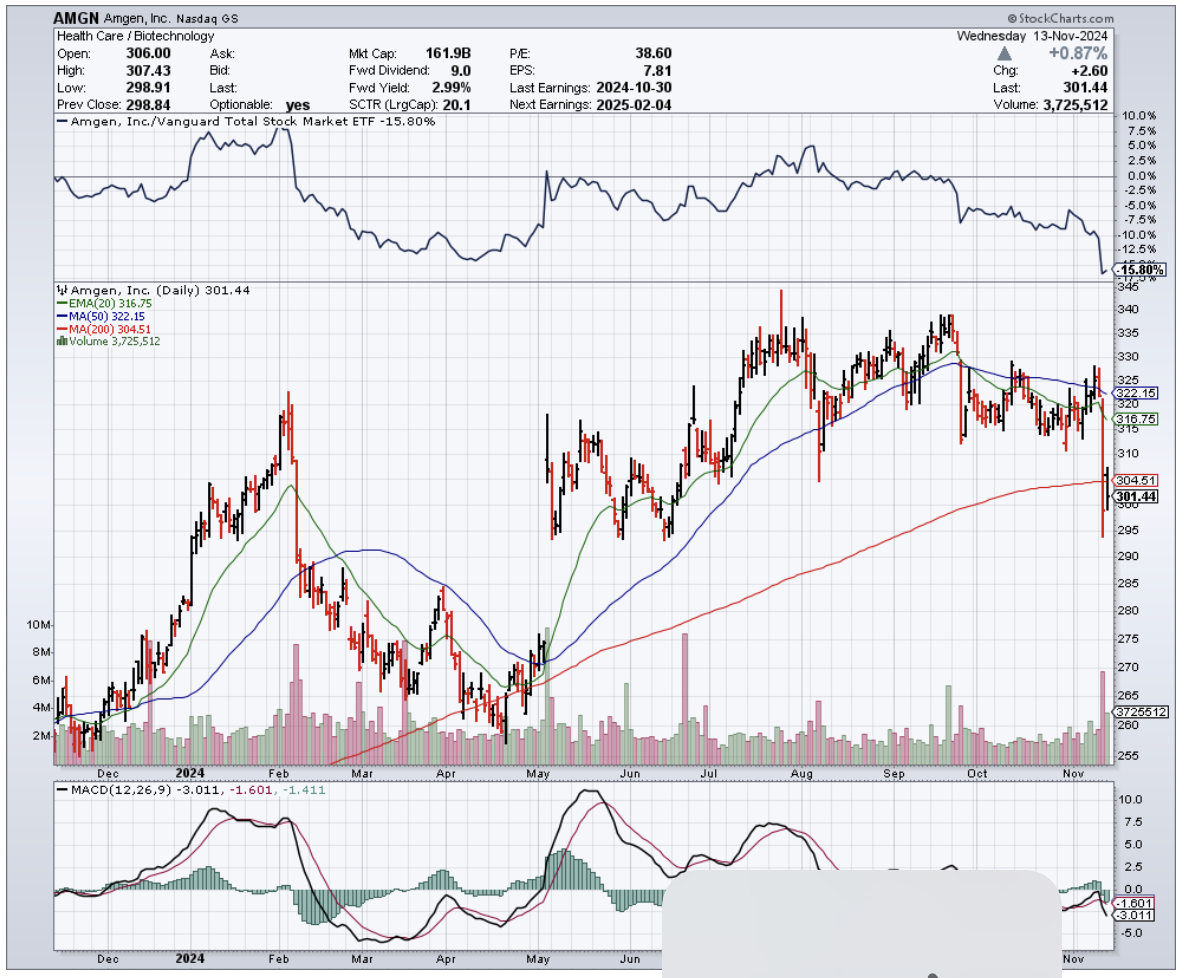
Mad Hedge Biotech and Healthcare Letter
October 28, 2024
Fiat Lux
Featured Trade:
(WHEN WALL STREET MET PHARMA)
(PFE), (TSLA), (AAPL)
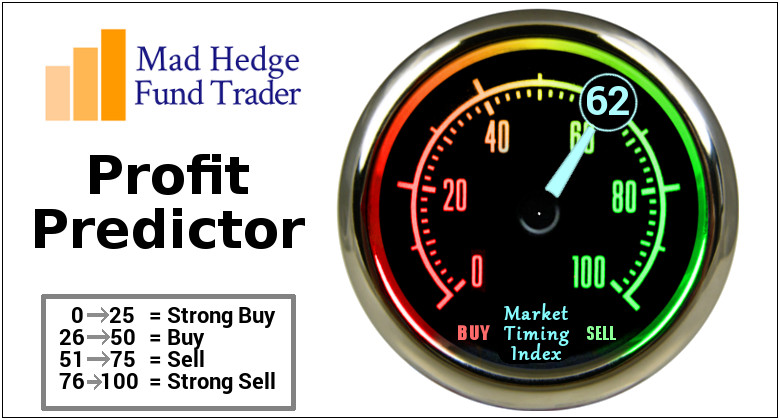
If corporate America were a dinner party (and let's face it, sometimes it absolutely is), Pfizer (PFE) would be that guest who showed up fashionably late with an award-winning bourbon pecan pie during the pandemic, and is now being quietly judged for bringing Trader Joe's crackers to the latest soirée. The pharmaceutical giant, which briefly enjoyed the kind of celebrity usually reserved for Tesla (TSLA) and Apple (AAPL), finds itself in the midst of what we might delicately call a boardroom intervention. With its stock price taking a dive, Pfizer attracted the attention of Starboard Value, a hedge fund with a billion dollars' worth of opinions about how to run things better.
Unfortunately for Starboard, these problems are not that simple to fix. Here's the thing about making breakthrough drugs: 9 out of 10 fail, each costs about $2 billion to develop, and even the most brilliant scientists can't tell you which one will work until the very end. This uncertainty sits at the heart of Pfizer's current predicament. After delivering a ratings blockbuster with its COVID-19 vaccine and Paxlovid treatment, the company now faces the pharmaceutical industry's dreaded sophomore album syndrome.
On top of that, every successful drug faces the same issue: it comes with its own expiration date. Patents run out, generic competitors swoop in, and suddenly everyone's asking, "What's next?"
And here's where it gets more interesting, in the way that all corporate power plays are interesting if you enjoy watching incredibly wealthy people disagree about how to become even wealthier. Take Starboard's critique of Pfizer's performance. It has all the subtlety of a CNN town hall debate, spiced up with the potential involvement of former Pfizer CEO Ian Read and CFO Frank D'Amelio — a plot twist as unsurprising as finding a filibuster in the Senate.
Having previously applied its corporate reconstruction techniques to the restaurant industry (think less Thomas Keller, more Olive Garden optimization), the hedge fund now fancies itself as something of a pharmaceutical expert. This is like suggesting that because someone successfully managed a food truck, that same person is qualified to run a three-Michelin-star restaurant.
Granted, Starboard has an impressive track record in corporate makeovers, much like the HGTV stars of Wall Street. Still, renovating a pharmaceutical company isn't the same as flipping a restaurant chain. There's something uniquely challenging about applying fast-casual dining turnaround principles to the development of life-saving medications. Some processes simply can't be rushed unless you enjoy explaining to the FDA why you thought clinical trials were more of a suggestion than a requirement.
As we try to figure out what's happening with the pharma giant right now, it helps to keep in mind that the key question isn't just whether Pfizer needs a makeover (though that's certainly part of it), but whether Wall Street's "time is money" philosophy can successfully coexist with the "science takes time" reality of drug development. It's the corporate equivalent of trying to teach quantum physics to a day trader - theoretically possible, but likely to result in some interesting misunderstandings along the way.
So, what's the play here? Looking at Pfizer's current stock price of around $28.45 (down 2.47%), the chart looks about as exciting as a waiting room magazine collection.
While the stock hovers below its 50-day moving average and sits near the lower end of its $25.20 - $31.54 yearly range, there are a few bright spots: a healthy 5.91% dividend yield and several promising projects in the pipeline - an RSV vaccine and an obesity treatment that could have customers lining up around the block again.
But here's my recommendation: Keep this one on your watchlist, but hold off on placing your order just yet.
Think of Pfizer as that once-trendy restaurant that's neither closing its doors nor winning any new Michelin stars - it's simply simmering on medium heat while the new chef (courtesy of Starboard) debates menu changes with the original kitchen staff.
Will Starboard's intervention prove to be the corporate equivalent of a breakthrough drug, or more like one of those miracle cures you see advertised at 3 AM?
The answer, like most things in the pharma world, will take time to develop. And in this battle of wits within corporate America, sometimes the hardest pill to swallow is patience - though I suspect Starboard would prefer it in fast-dissolving form.
After all, when Wall Street meets Pharma, it's less about whether the patient needs the medicine and more about timing the market's appetite.
For now, let's keep this one in the "worth watching" category until we see some signs of the stock's vital signs improving.
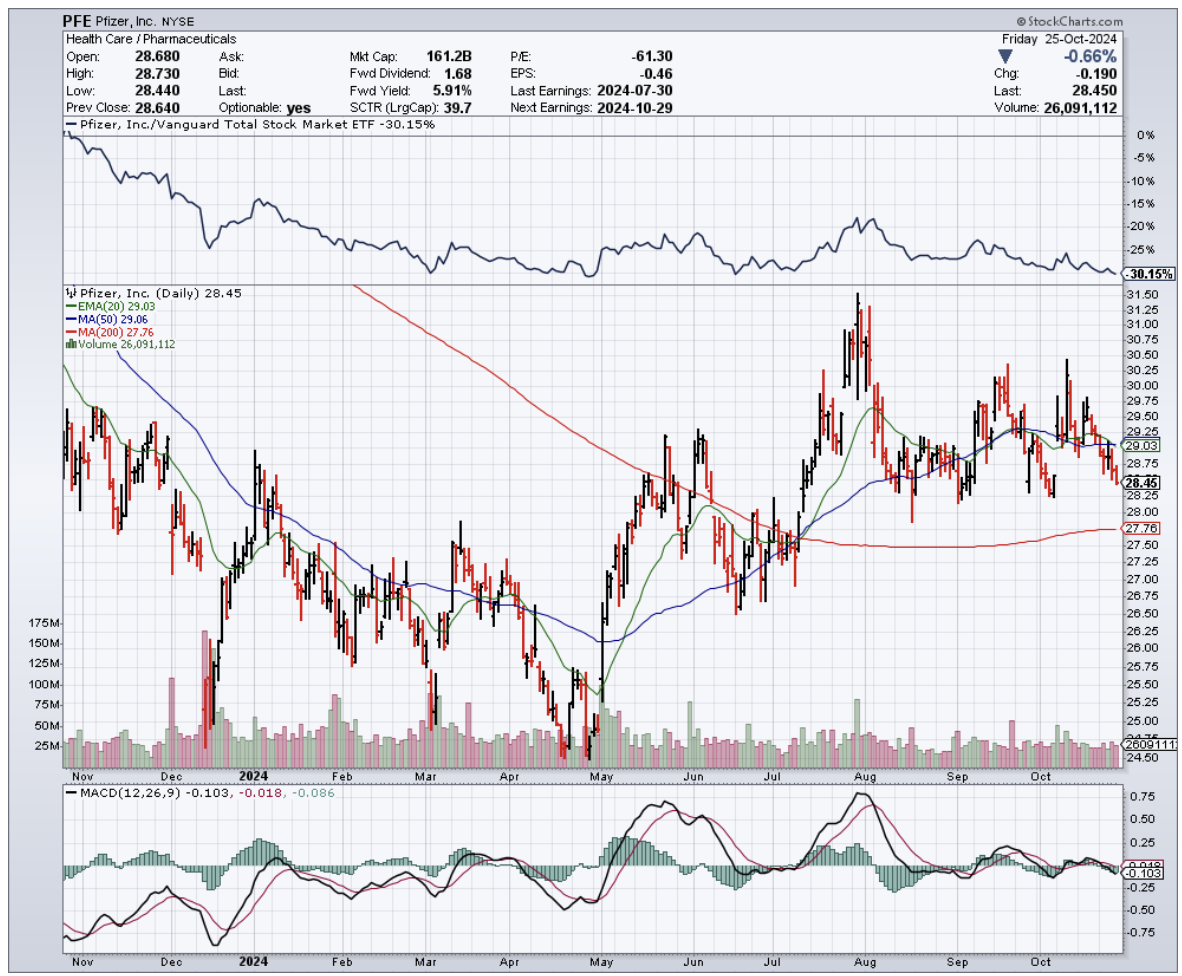
Legal Disclaimer
There is a very high degree of risk involved in trading. Past results are not indicative of future returns. MadHedgeFundTrader.com and all individuals affiliated with this site assume no responsibilities for your trading and investment results. The indicators, strategies, columns, articles and all other features are for educational purposes only and should not be construed as investment advice. Information for futures trading observations are obtained from sources believed to be reliable, but we do not warrant its completeness or accuracy, or warrant any results from the use of the information. Your use of the trading observations is entirely at your own risk and it is your sole responsibility to evaluate the accuracy, completeness and usefulness of the information. You must assess the risk of any trade with your broker and make your own independent decisions regarding any securities mentioned herein. Affiliates of MadHedgeFundTrader.com may have a position or effect transactions in the securities described herein (or options thereon) and/or otherwise employ trading strategies that may be consistent or inconsistent with the provided strategies.
This site uses cookies. By continuing to browse the site, you are agreeing to our use of cookies.
OKLearn moreWe may request cookies to be set on your device. We use cookies to let us know when you visit our websites, how you interact with us, to enrich your user experience, and to customize your relationship with our website.
Click on the different category headings to find out more. You can also change some of your preferences. Note that blocking some types of cookies may impact your experience on our websites and the services we are able to offer.
These cookies are strictly necessary to provide you with services available through our website and to use some of its features.
Because these cookies are strictly necessary to deliver the website, refuseing them will have impact how our site functions. You always can block or delete cookies by changing your browser settings and force blocking all cookies on this website. But this will always prompt you to accept/refuse cookies when revisiting our site.
We fully respect if you want to refuse cookies but to avoid asking you again and again kindly allow us to store a cookie for that. You are free to opt out any time or opt in for other cookies to get a better experience. If you refuse cookies we will remove all set cookies in our domain.
We provide you with a list of stored cookies on your computer in our domain so you can check what we stored. Due to security reasons we are not able to show or modify cookies from other domains. You can check these in your browser security settings.
These cookies collect information that is used either in aggregate form to help us understand how our website is being used or how effective our marketing campaigns are, or to help us customize our website and application for you in order to enhance your experience.
If you do not want that we track your visist to our site you can disable tracking in your browser here:
We also use different external services like Google Webfonts, Google Maps, and external Video providers. Since these providers may collect personal data like your IP address we allow you to block them here. Please be aware that this might heavily reduce the functionality and appearance of our site. Changes will take effect once you reload the page.
Google Webfont Settings:
Google Map Settings:
Vimeo and Youtube video embeds:
